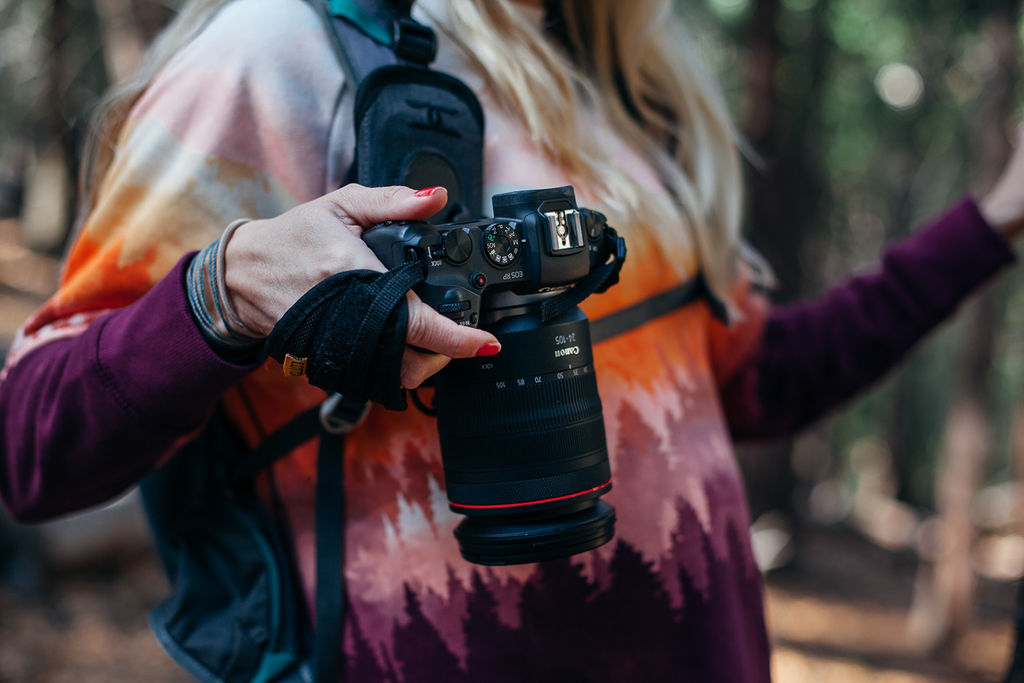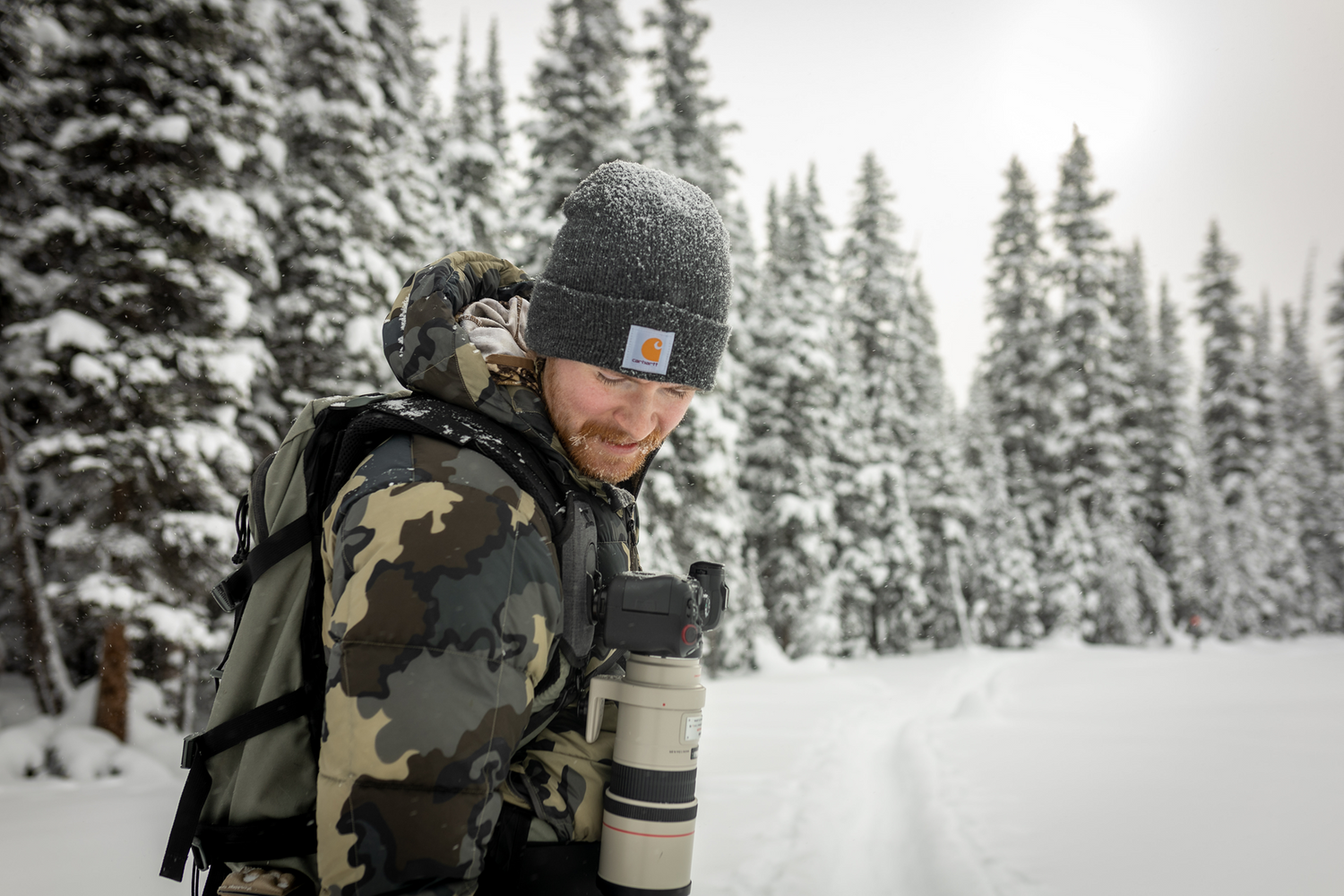Nature photography often focuses on capturing breathtaking landscapes, vibrant wildlife, or majestic scenes. While these images are stunning, photography can go beyond simply being beautiful—it can tell a story. When you focus on storytelling in your nature photography, your work takes on new meaning, creating deeper connections with your audience and leaving a lasting impression.
In this guide, we'll dive deeper into how you can go beyond taking pretty pictures and use your photography to tell powerful stories. Whether it's capturing emotions, showing nature’s struggles, or highlighting the bond between humans and the environment, storytelling will elevate your work to new heights.
1. The Importance of Storytelling in Nature Photography
Photography can communicate a lot without using words, and nature is full of stories waiting to be told. Every landscape, every animal, and every element of the natural world is part of a bigger picture. By thinking about the narrative behind your shot, you can create images that resonate with people on an emotional level.
A great photo doesn’t just show what’s there—it makes the viewer feel something. It might remind them of a similar place they’ve been, evoke a sense of wonder, or encourage them to reflect on the fragility of our environment. By focusing on the storytelling aspect, you can convey the deeper meaning behind the beauty of nature.
2. How to Tell a Story Through Your Photography
Embrace Emotion
One of the best ways to tell a story through photography is by capturing emotion. Nature, like life, is filled with moods—serenity, power, loneliness, and joy. These emotions make your photographs relatable and impactful.
-
Use Lighting to Your Advantage: The type of light can significantly impact the mood of your photograph. Early morning and late afternoon (golden hours) create soft, warm light that evokes peace and beauty. On the other hand, harsh midday light or the deep shadows of a cloudy day can add tension or drama to your shots.
-
Weather Can Be a Storytelling Tool: Weather plays a big role in creating atmosphere. A storm rolling in can add drama and tension, while fog or mist can create a sense of mystery. A sunny day might feel peaceful or hopeful. By embracing the mood of the weather, you can add layers to your story.
Show Struggle and Movement in Nature
Nature is full of action—wind bending trees, water crashing against rocks, animals in flight. These moments of movement tell stories of survival, adaptation, and change. Capturing these elements can convey the dynamism and unpredictability of the natural world.
-
Capture Animals in Action: Birds in flight, predators on the hunt, or even a squirrel gathering food for winter all tell stories of survival and instinct. These moments show how all living things are constantly working to survive in their environments.
-
Include the Elements: Wind, rain, waves, or snow can all be part of the story you’re telling. Showing how the environment interacts with the landscape or wildlife adds depth to your images. For instance, a tree bent by the wind shows resilience, while a leaf coated in frost captures the quiet stillness of winter.
3. Master Composition to Tell Your Story
Composition—how you arrange elements in your frame—plays a crucial role in storytelling. Thoughtful composition can guide the viewer’s eye and help them focus on what’s important in your image.
Using a photography harness allows you to comfortably move through various environments, keeping your hands free to adjust your camera and position for the perfect shot. Whether you're bending low for a close-up or framing a wide landscape, our harness ensures your gear is secure and accessible without getting in the way of your creative process.
Layer Your Images
Think of your frame as having three layers: foreground, middle ground, and background. Including all three can create a sense of depth and make your image more immersive.
-
Foreground: Including objects in the foreground, like rocks, plants, or water, helps pull the viewer into the image. This gives them a sense of place, as if they’re standing right there in the scene.
-
Middle Ground and Background: Use these to show the bigger picture. A mountain or sunset in the distance tells a different part of the story, offering context or giving the scene a sense of scale.
Leading Lines
Look for natural lines in your environment—rivers, trails, tree branches—that lead the viewer’s eye toward the subject of your photo. These lines can create a sense of movement or guide your audience through the story you’re telling.
Use Negative Space
Negative space, or empty areas in your frame, can be a powerful tool in storytelling. By leaving space around your subject, you can highlight feelings of isolation, peace, or vastness. For example, a lone tree against a wide sky emphasizes solitude and resilience.
4. Focus on the Small Details
The beauty of nature photography isn’t only found in grand landscapes; it’s also in the small, often unnoticed details. Capturing the smaller stories in nature can evoke wonder and help viewers appreciate the intricate beauty of the natural world.
Macro Photography
Using macro photography to zoom in on small subjects—like insects, raindrops on leaves, or the texture of a rock—can reveal nature’s tiny, often-overlooked details. These images tell stories about the delicacy and complexity of the world around us.
Contrast and Juxtapositions
Look for contrasts in nature, such as a flower growing out of a rock or the way sunlight hits frosty leaves. These contrasts can symbolize the struggles and balance of life in nature, adding a deeper meaning to your photos.
5. Highlight the Human Connection with Nature
Nature photography can also tell stories about our relationship with the environment. Including human elements in your shots adds context, reminding viewers of their connection to nature.
Incorporate People
A lone hiker on a trail, a fisherman on a quiet lake, or even a small cabin in the woods introduces the human element. This helps viewers relate to the scene and think about their own experiences in nature. It also shows how humans interact with, rely on, and sometimes impact the natural world.
Telling Environmental Stories
Your photography can raise awareness about important environmental issues. Images of deforestation, pollution, or wildlife in endangered habitats can tell powerful stories about the state of the planet and inspire others to take action.
6. Patience is Key: Let the Story Unfold
Nature photography often requires patience. The best stories aren’t always apparent right away. Sometimes, you need to wait for the right moment—whether it’s a change in the light, an animal passing through, or a weather event unfolding.
With a camera sling, you can comfortably keep your camera at the ready while waiting for the light to shift or an animal to appear. Its ergonomic design ensures you can remain prepared for hours without the weight of your gear causing strain, allowing you to stay focused on capturing the right moment for your story.
Be Prepared to Wait
Spend time in one spot, observe, and let the scene develop. Watch how the light shifts or how animals behave over time. Often, waiting allows you to capture the most genuine moments—ones that tell the most authentic stories.
Revisit Locations
Don’t be afraid to revisit the same location multiple times. A place might look completely different at dawn than at dusk, in winter versus spring, or before and after a storm. These changes over time can add depth to your story and allow you to capture a full narrative of the environment.
Crafting Stories That Resonate
While taking a beautiful photo is rewarding, creating a narrative through your images can be even more fulfilling. By focusing on the emotions, struggles, and moments of connection in nature, you can tell stories that resonate with people on a deeper level.
As a nature photographer, you have the unique opportunity to use your images to inspire, inform, and evoke strong emotions. So the next time you’re out with your camera, remember: you’re not just taking pictures—you’re telling stories.
Ready to Start Telling Stories with Your Photography?
Whether you’re a seasoned professional or just getting started, remember that nature has stories waiting to be told. All you need is patience, observation, and a thoughtful approach to your photography to bring those stories to life.
Browse our professional camera carriers to help you capture the perfect shot!





